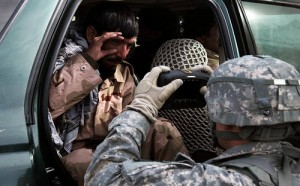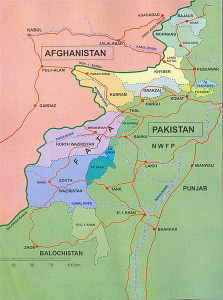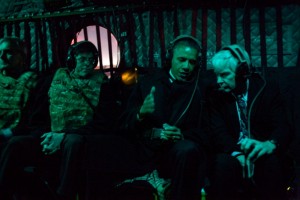New Green on Blue Attack Kills Three British Troops in Afghanistan
Three British soldiers were killed today in Helmand province in Afghanistan, extending the rising trend of green on blue killings where Afghan security forces turn their weapons on NATO personnel. Because NATO systematically under-reports green on blue attacks by only reporting on attacks in which NATO personnel are killed, not when they are injured or escape injury, we have only an incomplete picture of how rapidly the attacks are growing.
Reuters brings us the details of today’s killings:
An Afghan policeman shot dead three British soldiers at a checkpoint in southern Helmand province on Sunday, Afghan officials said, the latest in a chain of increasingly frequent rogue killings.
A fourth British soldier was also injured, provincial governor spokesman Daoud Ahmadi said of the attack, which could further erode trust between NATO and the Afghan forces they train before most foreign combat troops leave in 2014.
Note that this report cites Afghan authorities on the attack and includes the fact that a fourth British soldier was wounded. That contrasts with the AP report in the Washington Post, where we only learn about the deaths:
Three British soldiers were killed in southern Afghanistan on Sunday by a man dressed in the uniform of the country’s police force, Britain’s defense ministry said in a statement Monday.
The ministry said two soldiers from the 1st Battalion Welsh Guards and one from the Royal Corps of Signals were killed in an incident at Checkpoint Kamparack Pul in the Nahr-e Saraj district of Helmand province.
The soldiers were part of a police advisory team which had visited the checkpoint to conduct a shura — a meeting of village elders. Defense officials said in a statement that a man wearing the uniform of the Afghan National Civil Order Police opened fire as the soldiers were leaving the checkpoint. They received first aid at the scene but died from their injuries.
It would appear that Britain’s defense ministry is adhering to the same policy as NATO, which the AP’s Robert Burns reported earlier discloses only green on blue deaths, not injuries or attacks which do not produce deaths or injuries: Read more →



